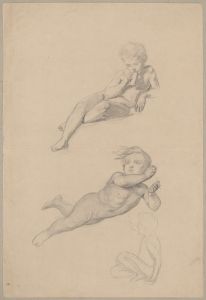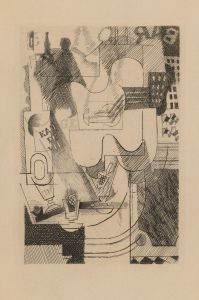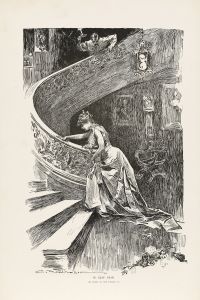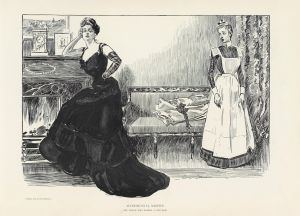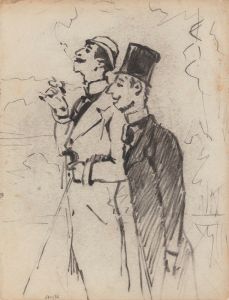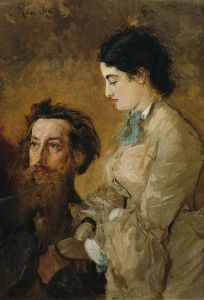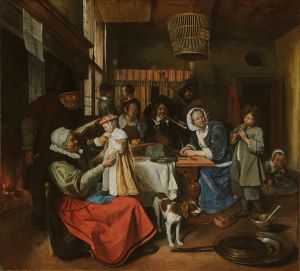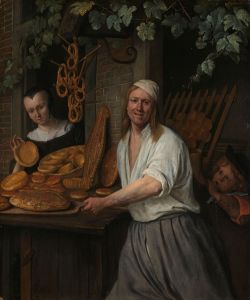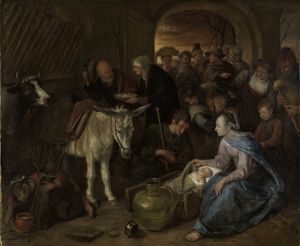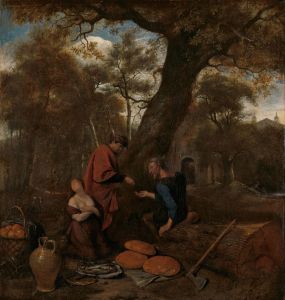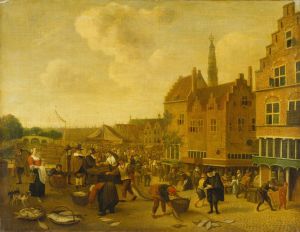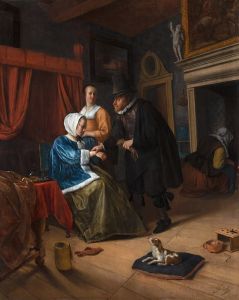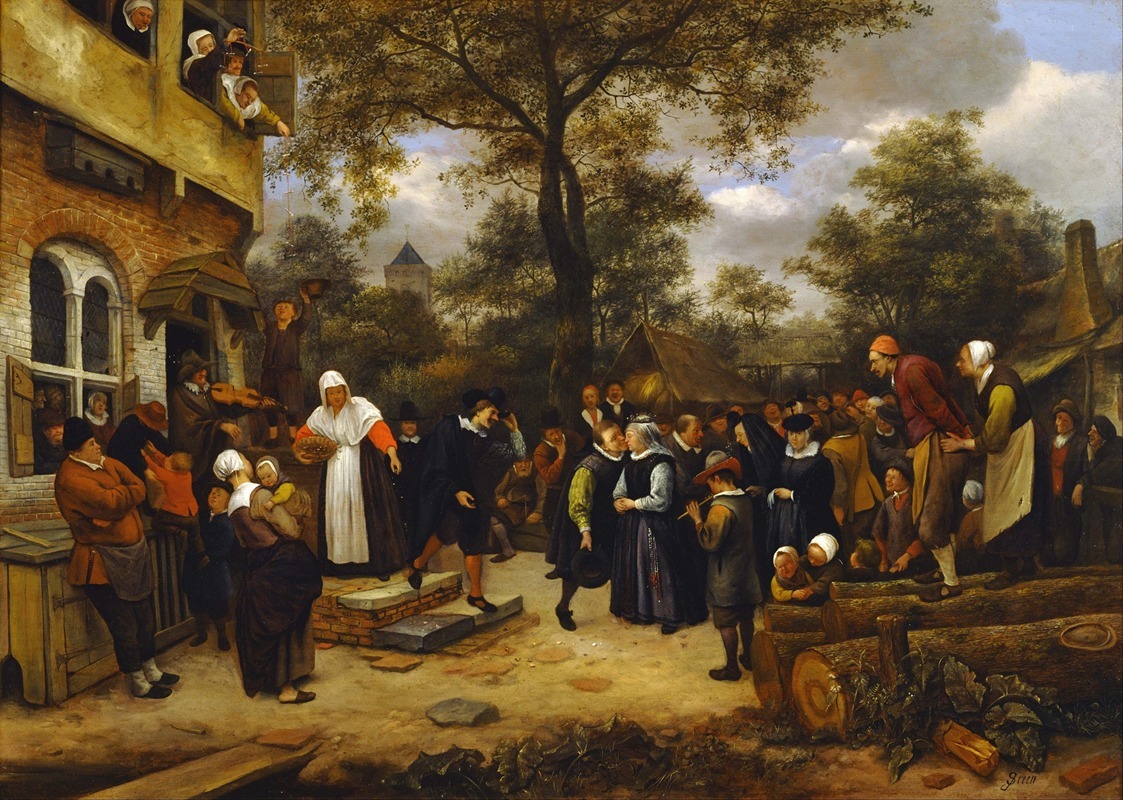
Village Wedding
A hand-painted replica of Jan Steen’s masterpiece Village Wedding, meticulously crafted by professional artists to capture the true essence of the original. Each piece is created with museum-quality canvas and rare mineral pigments, carefully painted by experienced artists with delicate brushstrokes and rich, layered colors to perfectly recreate the texture of the original artwork. Unlike machine-printed reproductions, this hand-painted version brings the painting to life, infused with the artist’s emotions and skill in every stroke. Whether for personal collection or home decoration, it instantly elevates the artistic atmosphere of any space.
"Village Wedding" is a painting by the Dutch artist Jan Steen, a prominent figure of the Dutch Golden Age known for his lively and often humorous depictions of 17th-century Dutch life. Jan Steen was born in 1626 in Leiden, Netherlands, and his work is characterized by its vibrant storytelling, attention to detail, and the ability to capture the essence of everyday life with a sense of humor and moral undertones.
The painting "Village Wedding" is a quintessential example of Steen's genre scenes, which often depict domestic life, festivities, and the social customs of his time. Although the exact date of the painting is not precisely known, it is generally believed to have been created during the mid to late 17th century, a period when Steen was actively producing some of his most notable works.
In "Village Wedding," Steen presents a lively scene of a peasant wedding celebration. The composition is bustling with activity, capturing the joyous and chaotic atmosphere of the event. The painting is filled with numerous figures, each engaged in various activities typical of a wedding feast. The characters are depicted with expressive faces and dynamic poses, contributing to the overall sense of movement and festivity.
Steen's attention to detail is evident in the depiction of the setting and the characters' attire. The scene is set in a rustic village environment, with elements that suggest a rural Dutch setting. The clothing of the figures reflects the fashion of the time, with a focus on the traditional garments worn by the peasantry. This attention to detail not only adds authenticity to the scene but also provides insight into the cultural and social aspects of 17th-century Dutch life.
One of the hallmarks of Jan Steen's work is his ability to infuse his paintings with humor and moral lessons. In "Village Wedding," this is achieved through the depiction of various vignettes within the larger scene. For instance, the painting may include humorous interactions between guests, playful children, or perhaps a tipsy reveler, all of which contribute to the narrative richness of the work. Steen often used such scenes to comment on human behavior, highlighting themes of indulgence, folly, and the transient nature of happiness.
Jan Steen's paintings, including "Village Wedding," are celebrated for their vibrant color palette and masterful use of light and shadow. His technique allows for a vivid portrayal of textures and materials, enhancing the realism of the scene. The composition is carefully balanced, guiding the viewer's eye through the various elements of the painting and creating a cohesive narrative.
"Village Wedding" exemplifies Steen's ability to capture the spirit of his time with wit and insight. His work remains an important part of the Dutch Golden Age of painting, offering a window into the social customs and everyday life of 17th-century Netherlands. Jan Steen's legacy continues to be appreciated for its artistic merit and the unique perspective it provides on the human condition.





